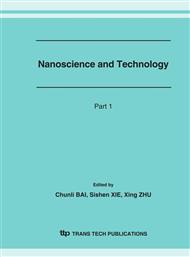p.537
p.541
p.545
p.549
p.553
p.557
p.561
p.565
p.571
Efficient Design of QCA Adder Structures
Abstract:
Optimizing arithmetic primitives such as quantum-dot cellular automata (QCA) adders is important for investigating high-performance QCA computers in this emerging nano-technological paradigm. In this paper, we demonstrate that QCA ripple carry adder and bit-serial adder designs actually outperform carry-look-ahead and carry-select adder designs because of the increase in required interconnects. Simulation results obtained by using the QCADesigner tool for the proposed adder designs are also presented.
Info:
Periodical:
Pages:
553-556
Citation:
Online since:
March 2007
Authors:
Price:
Сopyright:
© 2007 Trans Tech Publications Ltd. All Rights Reserved
Share:
Citation:


